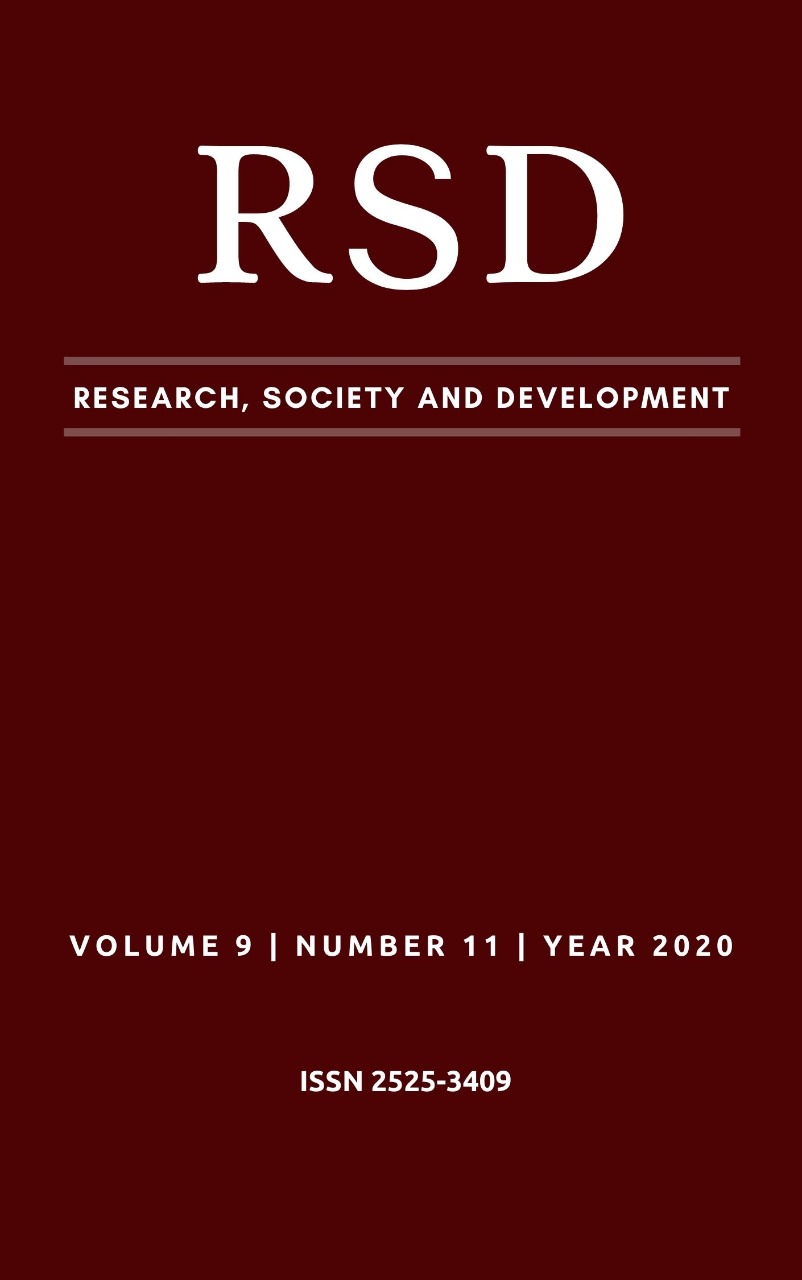Historical aspects of the male figure: Violence against women
DOI:
https://doi.org/10.33448/rsd-v9i11.10787Keywords:
Violence against women, Cultural values, Interventions.Abstract
Violence against women is a public health problem with relationships intrinsic to historical facts and cultural values. This work aims to analyze historical and cultural facts linked to the respective theme. A narrative review was carried out between the months of September and November 2020, by searching databases focused on the following sources: academic articles, monographs and books. The results found show that, throughout history, the man has imposed himself as the main figure of the facts and events, while the woman has become a figure of submission and support. It is noticeable that writing, in the Ancient Age, and the performance of the Catholic Church, in the Medieval Age, contributed strongly to enhance the male gender. In those times, women practically did not dominate writing, leaving men to literary production, which brought their perceptions among them female submission. Therefore, the feminine point of view and its possible contributions in areas neglected by men have been disadvantaged by history, and it is precisely these historical facts that created cultural values in society that contributed to the increase in cases of violence against women. In view of this research, it is concluded that violence against women has historical and cultural roots, linked mainly to machismo. Despite the advances in legal laws achieved over the years, services for the protection of victimized women are worryingly ineffective. The data indicate a real need to expand and consolidate measures to protect women's safety.
References
Araújo. C. (2000). Marxismo, feminismo e o enfoque de gênero. Crítica Marxista, (11), 65-70. São Paulo: Boitempo.
Almeida, E. O. S, Nozawa, T. N. E, Romera, V. M. (2012). Violência Intrafamiliar Contra A Mulher: Intervençõesdo Assistente Social. Brasil DF. Recuperado de:.
Avon/Ipsos. Pesquisa Instituto Avon/Ipsos Percepções sobre a Violência Doméstica Contra a Mulher no Brasil (2011). Percepções sobre a Violência Doméstica Contra a Mulher. Recuperado de:<http://www.institutoavon.org.br/tag/pesquisa/>.
Anderson, M. I. P, Romero, X. A, Arias-Castillo, L, Moreno, C. B, Sinisterra, J. S. G, Martín, T. M. (2018). Medicina de família e comunidade, atenção primaria e violência: formação e ação em Iberoamerica. Rev Bras Med Fam Comunidade. 13(1):9-28.
Brasil. Presidência da República. (2015) Lei nº 13.104, de 9 de Março de 2015. Altera o art. 121 do Decreto-Lei nº 2.848, de 7 de dezembro de 1940 - Código Penal, para prever o feminicídio como circunstância qualificadora do crime de homicídio, e o art. 1º da Lei nº 8.072, de 25 de julho de 1990, para incluir o feminicídio no rol dos crimes hediondos. Brasília: Presidência da República.
Brasil. Secretaria Nacional de Enfrentamento à Violência contra as Mulheres. (2011). Secretaria de Políticas para as Mulheres. Política nacional de enfrentamento à violência contra as mulheres. Brasília: Secretaria Nacional de Enfrentamento à Violência contra as Mulheres.
Brasil. Ministério da Saúde (MS). (2008). Temático Prevenção de Violência e Cultura da Paz II. Brasília: OPAS.
Brasil. Ministério Da Saúde. (2009). O que é incesto. Recuperado de:<http://dab.saúde.gov.br/cnhd/ações.php>.
García-Moreno C, Jansen, H. A. F. M, Ellsberg, M, Heise, L, Watts, C. (2005). Multicountry study on women’s health and domestic violence against women: initial results on prevalence, health outcomes and women’s responses. Geneva: World Health Organization.
Karawejczyk, M. (2020). O voto feminino no Brasil. Brasil-DF. Recuperado de: <http://querepublicaeessa.an.gov.br>.
Laraia, M. (2009). Cultura: conceito antropológico um. São Paulo: Companhia das letras.
Lennon, J. (2010). Woman Is The Nigger Of The World. Recuperado de:<http://obaudoedu.blogspot.com.brl>.
Lima, R. L. (2010). O Imaginário Judaico-Cristão e a Submissão das Mulheres. Fazendo Gênero 9, Diáspora, Diversidade, Deslocamentos. 23 a 26 de agosto.
Mendonça, C. S, Machado, D. F, Almeida, M. A. S, Castanheira, E. R. L. (2020). Violência na Atenção Primária em Saúde no Brasil: uma revisão integrativa da literatura. Ciênc. saúde coletiva vol.25 no.6 Rio de Janeiro June 2020 Epub June 03.
Marteleto, R. M. (2009). Informação Saúde e Redes Sociais: diálogos de conhecimentos nas comunidades da Maré. Rio de Janeiro: Editora Fiocruz.
Minayo, M. C. S, Souza, E. R. (1997). Violência e Saúde como Campo Interdisciplinar e de ação coletiva. Hist Cien Saude; 4(3):513-531.
Treviso, M. A. M. (2012). A Igualdade, O Princípio Da Proibição Da Discriminação E As ações Afirmativas Como Promoção Dos Direitos Humanos, À Luz da Teoria Crítica. Recuperadode:<http://www.trt3.jus.br/download/artigos/pdf/109_igualdade_acoes_afirmativas.pdf>.
Santos, M. M, Oliveira, L. (2010). Igualdade nas relações de gênero na sociedade do capital: limites, contradições e avanços. Rev. Katál. Florianópolis 13(1), 11-19.
Varella, D. (2006). Borboleta da alma: escrito sobre ciência e saúde. São Paulo: Companhia das letras.
WHO Global Consultation on Violence and Health. (1996). Violence: a public health priority. Genebra: WHO.
Downloads
Published
Issue
Section
License
Copyright (c) 2020 Jaciara Pinheiro de Souza; Murilo de Jesus Porto; Ana Mara Borges Araujo; Gione Pinheiro Santana; Geilda Pinheiro Filgueiras; Allan Jhony Almeida dos Santos; Jeferson de Menezes Souza; Marcos Mendes de Matos; Luiz Rodrigo de Almeida Reis

This work is licensed under a Creative Commons Attribution 4.0 International License.
Authors who publish with this journal agree to the following terms:
1) Authors retain copyright and grant the journal right of first publication with the work simultaneously licensed under a Creative Commons Attribution License that allows others to share the work with an acknowledgement of the work's authorship and initial publication in this journal.
2) Authors are able to enter into separate, additional contractual arrangements for the non-exclusive distribution of the journal's published version of the work (e.g., post it to an institutional repository or publish it in a book), with an acknowledgement of its initial publication in this journal.
3) Authors are permitted and encouraged to post their work online (e.g., in institutional repositories or on their website) prior to and during the submission process, as it can lead to productive exchanges, as well as earlier and greater citation of published work.


